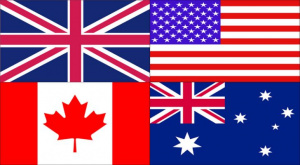Language/English/Vocabulary/Difference-between-verbs-See-Watch-Look
Hi everyone!😀
➡ In today's lesson, we will study the difference between these 3 verbs in the sense of "your eyes giving an image to your brain".
These 3 verbs have many other meanings, but we won't go into those.
With the completion of this lesson, consider investigating these related pages: Difference between ROBBER, BURGLAR ..., Words ending with the suffix less, At first and first & Not…as such.
to see[edit | edit source]
A general term for your eyes giving an image/images to your brain.
Often, you are not consciously/deliberately using your eyes to view the image(s).
to look[edit | edit source]
Usually, you are consciously/deliberately using your eyes for the image. The image your brain gets generally does not move. You also view the image for more than a very short time but less time than "to watch".
to watch[edit | edit source]
As with "to look", you are consciously/deliberately using your eyes for the image. However, the image your brain gets does move or is potentially expected to move. "to watch" is also generally for a longer period of time than "to look".
Example with "to see"[edit | edit source]
- I can hear a sound in the sky. Then I move my head to the direction of the sound. After that, I see the plane!
You are moving your head towards the source of the sound. At this point, your eyes pick what is making that sound - a plane - without thinking about it.
Example with "to look"[edit | edit source]
- I’m looking at some books in the shop which I think I might buy because they are interesting to me.
You are examining some books which you find interesting and which you might purchase. The books are not moving by themselves, but are stationary on the shelves. You are conscious about what the books are.
Example with "to see" and "to look"[edit | edit source]
- I’m at a museum. I can see the painting by Henri Matisse. I’m now looking at it.
My eyes observe that there is a Matisse painting on the wall. Then I deliberately continue my attention with my eyes on the picture.
NOT ”I’m watching the Matisse painting” - unless you are a security guard at the museum observing if the Matisse painting is moving because a thief is stealing it!
"to see" often tends to be used in a simple tense form whereas "to look" is frequently used in a continuous tense form. "to see" is usually a very quick and completed action whereas "to look" has the element of a more continuous action.
Example with "to watch"[edit | edit source]
- I’m watching the film on TV.
There is a moving image on the TV screen - the film - which I am continuing to observe consciously with my eyes.
It’s possible also to use: ”I’m seeing the film on TV.” From my experience, native English speakers tend to use ”see” rather than ”watch” when they are less concentrated on the film.
”I looked at a film on TV last night.” might be used, but much more rarely than "watched". However, it is usually used for viewing a very short part of the film - not the whole of the film.
As with "to look", "to watch" is frequently used in a continuous tense form because of the continuity associated with the action.
Sources[edit | edit source]
Videos[edit | edit source]
See - Watch - Look! What's The Difference? - English Vocabulary ...[edit | edit source]
Other Lessons[edit | edit source]
- As well as
- Numbers
- Phrasal Verbs UP!
- Words with different spellings
- Homophones
- Any and no
- Healthy Habits
- Asking Directions
- Meaning of ain't
- Also, as well and too

